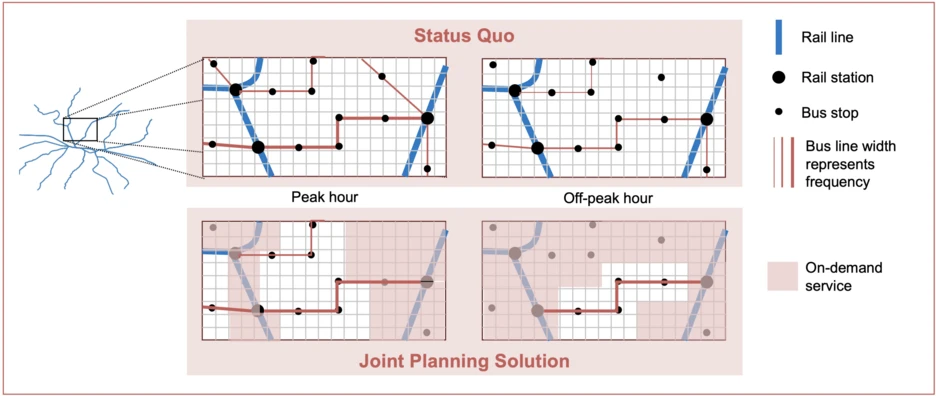| Analytical models and simulation will be used to analyze the new application boundaries of different service types under the cost structures considering autonomous vehicles. Besides analyzing costs, this evaluation can consider different performance metrics regarding efficiency, fairness, and sustainability. Then, the problem of planning public transportation with autonomous vehicles will be formalized mathematically. Besides the use of the aforementioned metrics/objectives, this requires analyzing which constraints need to be considered for the joint planning of line-based and on-demand service types. The resulting multi-objective problem is unlikely to be solved to optimality in a reasonable time. Hence, we will address how heuristic methods can be used to solve the resulting optimization problem. The performance of other recent approaches addressing similar problems will also be tested as benchmarks. Similar to these studies, this part of the project assumes exogenous demand. Finally, we will consider changes in travel behavior in the planning process. To this end, a framework will be developed, which connects the previously mentioned planning methods developed in this project to the AgiMo Digital Twin: running a MATSim model for a specific setting of the public transportation network will estimate the induced demand by the new and improved service, and the new demand can be input to the next iteration of the planning methods. |
